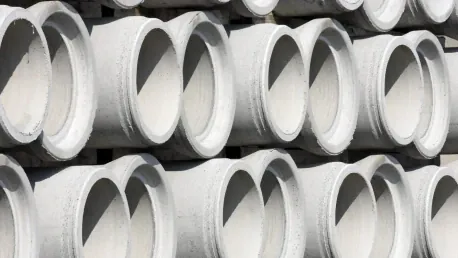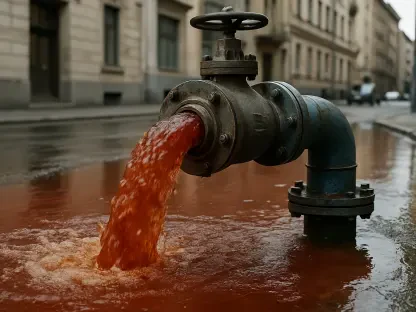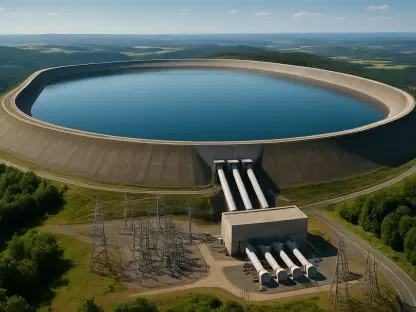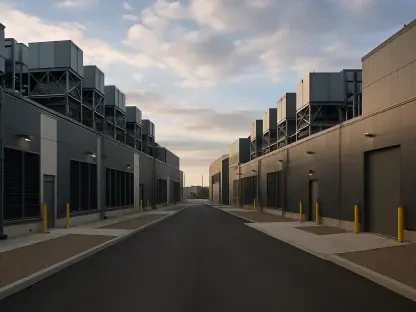West Virginia utilities are currently engaged in a significant infrastructural improvement effort aimed at replacing toxic lead water pipes, a move mandated by the Environmental Protection Agency (EPA) under a 2024 rule. This initiative seeks to address widespread concerns regarding lead exposure through drinking water, a problem with well-documented adverse health effects. Notably, however, the Trump administration has expressed intentions to roll back this program, a move that could potentially stall these critical efforts. As these decisions unfold, it’s vital to understand the broader context and implications of this initiative for the state’s public health and infrastructure.
Historically, communities across West Virginia have long contended with aging and deteriorating water infrastructure. The compounded effects of these issues manifest as frequent, extended water outages and boil notices, emphasizing the urgent need for substantial upgrades. Reports from the state’s water systems indicate that over a billion dollars are needed to bring the infrastructure up to par. Amid these infrastructure woes, the new federal rule shines a spotlight on the pernicious danger of lead pipes, which have been a longstanding public health concern due to their severe effects.
The EPA’s 2024 Rule and Federal Funding
The latest EPA regulation mandates water utilities to replace all lead service lines by 2037—a goal buttressed by over $15 billion in federal funding. However, the Trump administration’s recent review of this rule, coupled with its broader agenda to roll back various regulations, casts uncertainty over the future of these efforts. The ambitious goal set by the new rule is contingent upon consistent federal support, which in turn depends on the prevailing political climate and administration priorities at any given time.
The dangers of lead exposure through drinking water have been well-understood by federal regulators for decades, dating back to the first Lead and Copper Rule proposed in 1991. The latest rule, finalized under the Biden administration in October, represents a pivotal opportunity to mitigate the significant public health risks posed by lead pipes. However, the primary challenge now is identifying the existing lead pipes. This is a crucial step since lead’s harmful effects have prompted an array of health interventions over the years, yet the problem persists prominently within aging water systems.
Valerie Baron, the national policy director of the Natural Resources Defense Council’s Safe Water Initiative, emphasized the importance of the new regulation, noting that it is the first to acknowledge the necessity of physically removing lead pipes from the ground to achieve safety. Lead exposure is harmful to all individuals, with children and infants being particularly vulnerable. Her insights underscore the urgent need for a proactive approach to meet the rule’s goals and ensure communities are safeguarded against toxic exposure effectively.
Health Impacts of Lead Exposure
Lower levels of lead can cause severe physical and behavioral impacts in children, including damage to the brain and nervous system, slowed growth and development, and learning, behavior, hearing, and speech problems. In adults, lead exposure can adversely affect blood pressure, kidney function, and reproductive health. Given the extensive catalog of adverse effects associated with lead, no level of its presence in drinking water is deemed safe; thus warranting immediate and thorough action to eliminate it from water supply systems.
West Virginia’s lead exposure problem is not new. In 2021, an alarming discovery of elevated blood lead levels in three children in Clarksburg prompted the EPA to issue an emergency order. The city was directed to identify homes serviced by lead lines, provide alternative water sources, and continue replacing the lead service lines. Currently, Clarksburg’s water system is in the process of replacing approximately 4,000 lead service lines, illustrating the scale of problem-solving needed to comply with federal standards and protect public health.
Identifying and Replacing Lead Pipes
As of 2023, West Virginia water companies reported a significant knowledge gap concerning their water service lines’ composition. According to the EPA’s most recent survey, about two-thirds of their service lines are of unknown material, the third-highest rate among U.S. states. This gap is attributed to multiple factors, including a historical lack of information about customer-side service lines, which complicates efforts to fully replace hazardous materials within the allotted timeline and underscores the need for meticulous effort.
Service lines are bifurcated into the utility side (running from the water main to the water meter) and the customer side (from the water meter to the home). Historically, water companies were not required to know the material used on the customer side. The EPA now considers an entire water line to be of unknown material if the utility is unaware of the customer-side composition, as Wheeling Water Superintendent Lori Siburt explained. Despite the federal classification, Siburt noted that only about 15% of Wheeling Water’s service lines are currently undetermined, pointing to some progress amidst broader challenges.
Challenges and Legal Hurdles
The 2024 EPA rule brings additional changes, including updated water sampling requirements designed to more effectively detect lead and a lower concentration threshold—10 parts per billion—at which additional monitoring is mandated, despite the EPA acknowledging no safe level of lead in water. Homes constructed post-1988 are generally considered safe from lead pipes due to a 1986 federal ban, which became enforceable in 1988. These new sampling measures aim at more accurately reflecting lead levels and ensuring timely interventions when necessary.
Legal challenges to the 2024 rule have emerged, with the EPA requesting a 60-day pause for review under new leadership, an act consistent with precedent allowing agencies to revisit and revise past decisions if necessary. Concurrently, the House of Representatives is considering a measure to repeal the rule, contributing to the ongoing uncertainty. Additionally, funding from the Bipartisan Infrastructure Law—which supports this initiative—faces potential jeopardy due to executive orders from President Trump to freeze the funds, a directive that, although rescinded, continues to wend its way through legal processes and affect project planning.
Community Efforts and Public Involvement
West Virginia utilities are working on a major infrastructure improvement project to replace toxic lead water pipes, as mandated by the Environmental Protection Agency (EPA) under a 2024 rule. This initiative aims to tackle widespread concerns about lead exposure in drinking water, which has well-documented negative health effects. However, the Trump administration has shown intentions to roll back this program, which could delay these crucial efforts. As decisions are made, it’s important to understand the broader context and implications for public health and infrastructure in the state.
Communities across West Virginia have long struggled with aging, deteriorating water infrastructure, leading to frequent water outages and boil notices, underlining the urgent need for upgrades. Reports from the state’s water systems show that over a billion dollars are required to bring the infrastructure to standard. Amid these woes, the new federal rule highlights the serious danger posed by lead pipes, a longstanding public health concern due to their harsh health impacts.









